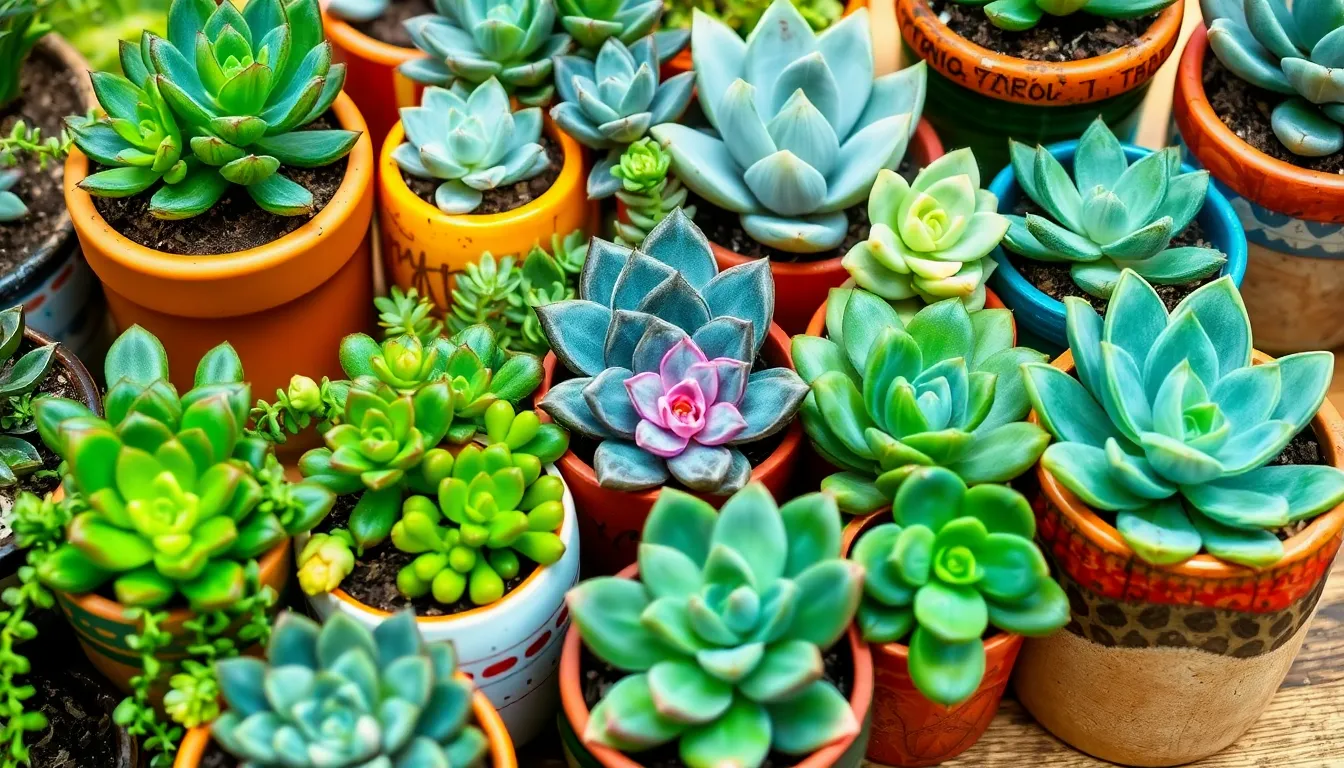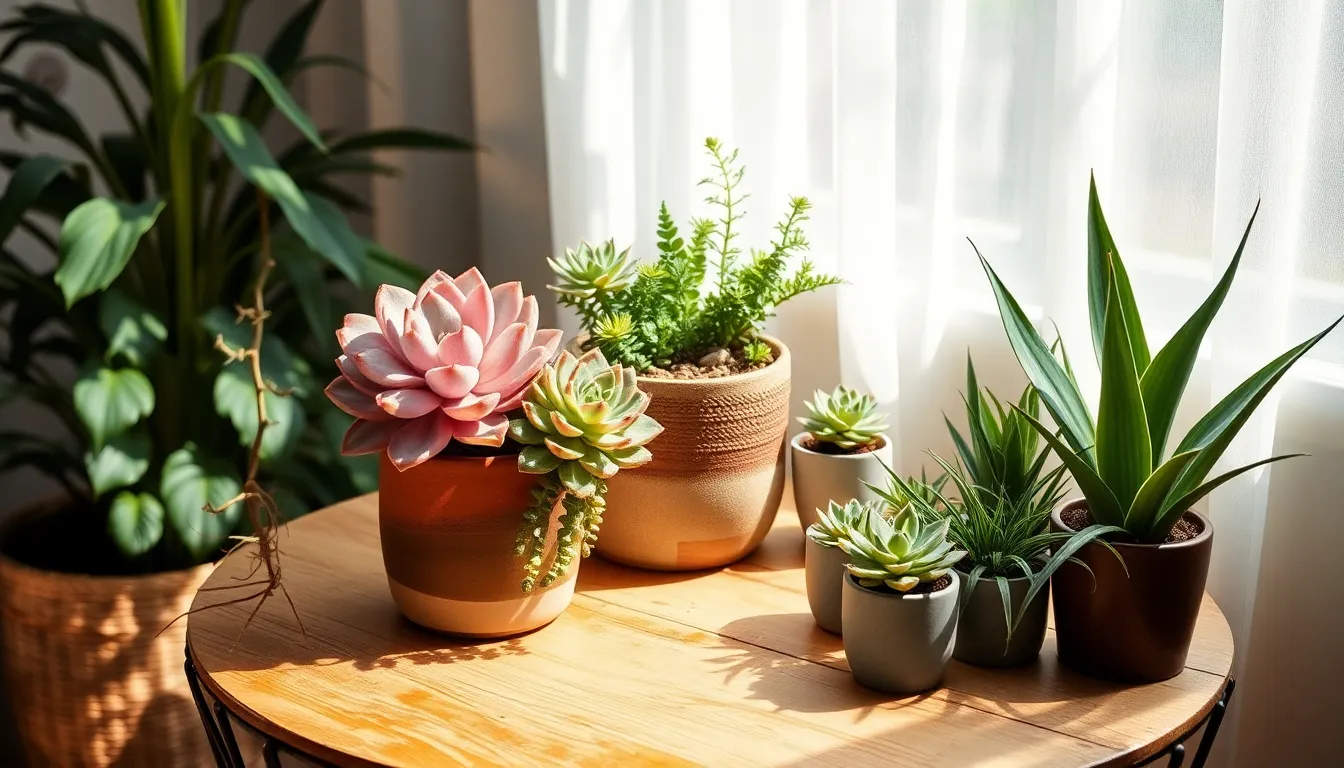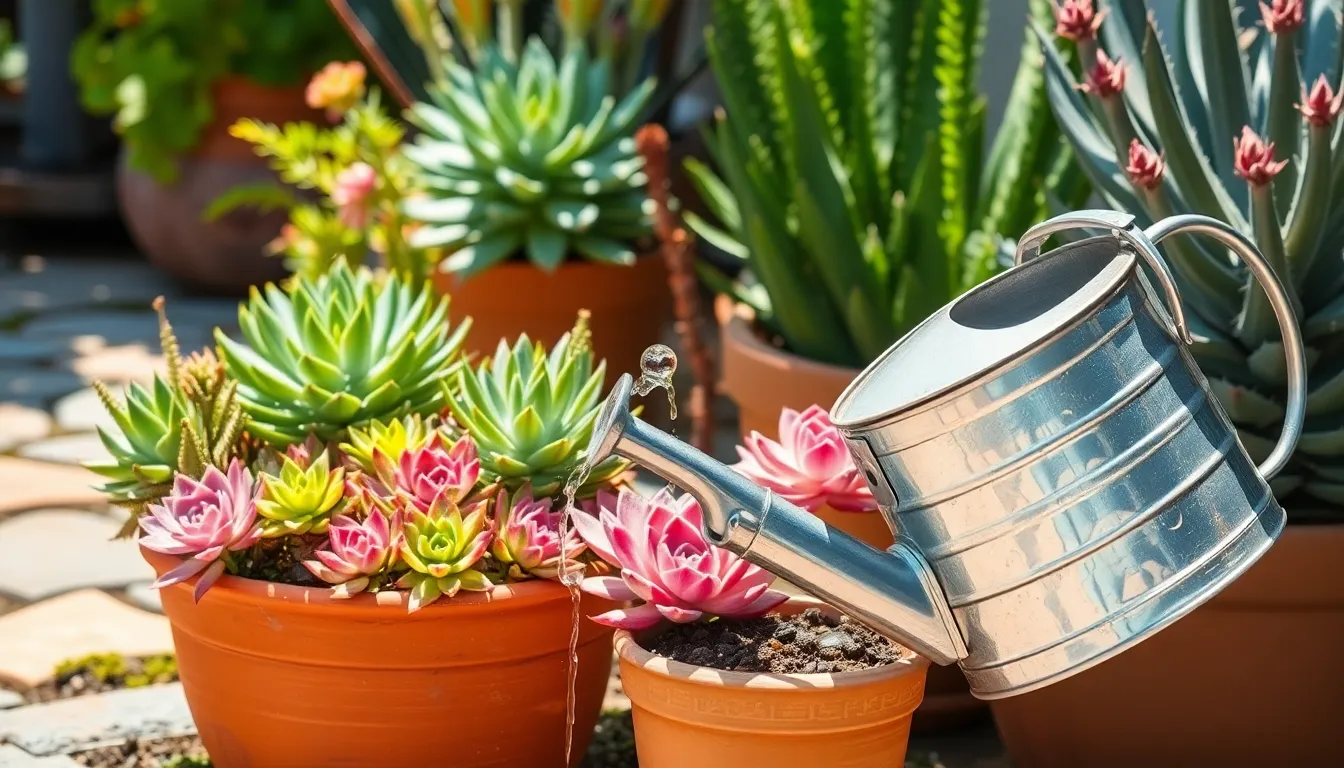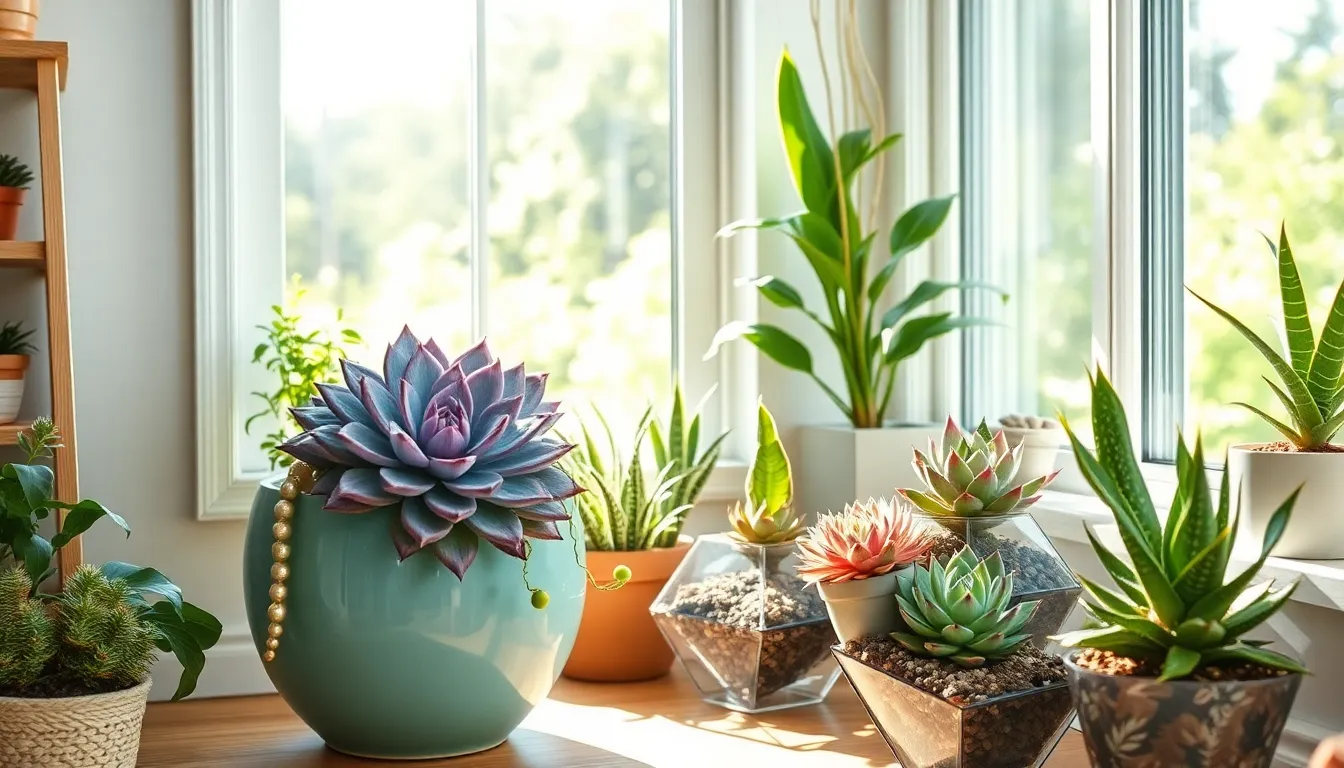There’s something undeniably magical about having a touch of the desert right in your home, and container-grown succulents make this an achievable dream for gardeners of all skill levels. Whether you’re a novice just dipping your toes into the world of horticulture or a seasoned green thumb seeking to expand your plant repertoire, growing succulents in containers offers an exciting and rewarding journey.
Succulents, with their unique shapes and vibrant colors, bring a sense of tranquility and style to any space, making them a cherished addition to both indoor and outdoor gardens. By the end of this article, you’ll discover not only the best practices for selecting the right containers and soil but also ingenious tips for maintaining these resilient beauties through every season.
Moreover, the low-maintenance nature of succulents makes them perfect companions for busy gardeners and enthusiasts alike who crave the satisfaction of nurturing life without the pressure of constant upkeep. In the following sections, we’ll explore the art of watering, light requirements, and creative container arrangements that will elevate your gardening skills and transform your living space into a lush oasis.
Select Suitable Succulent Varieties
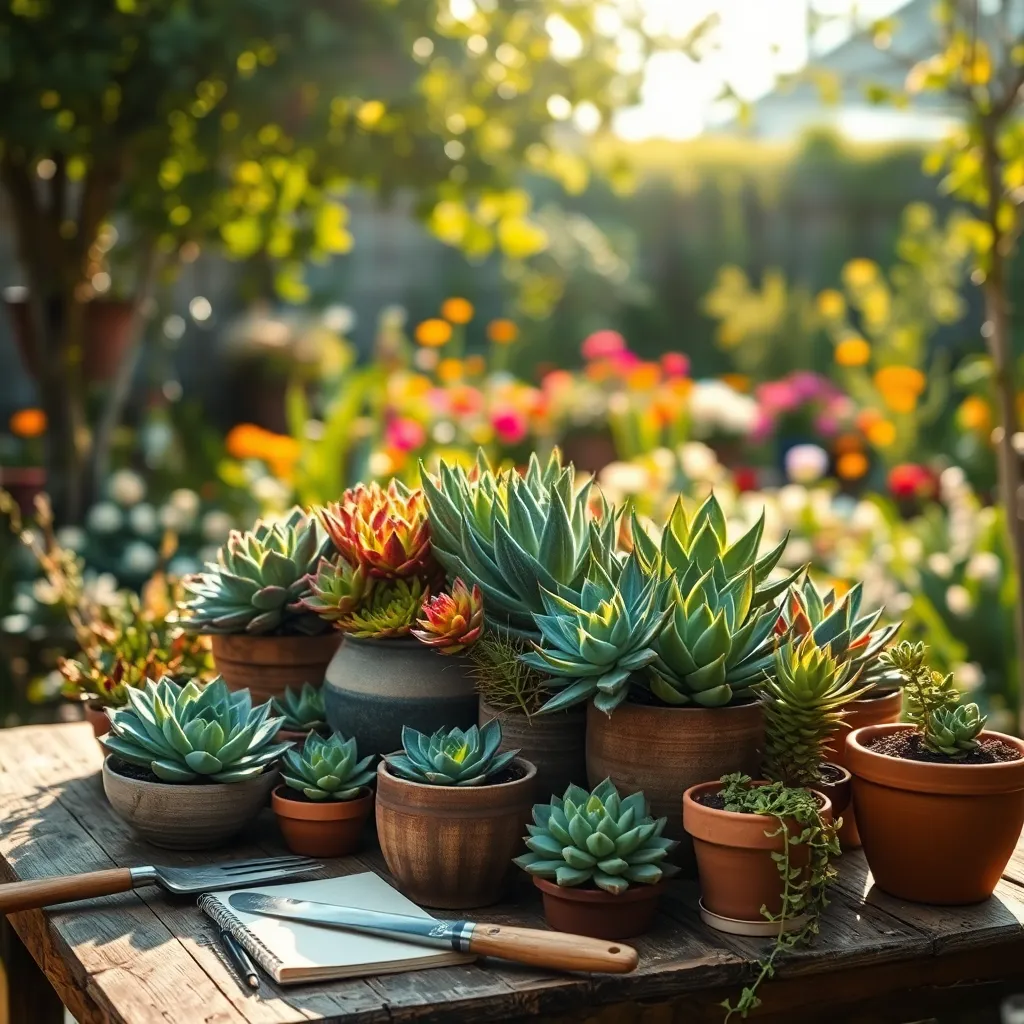
When choosing succulents for your containers, consider varieties that are known for their adaptability and resilience. Echeveria is a popular choice, with its stunning rosette shape and ability to thrive in various light conditions.
Another excellent option is the Jade Plant (Crassula ovata), which is well-suited for beginners due to its low-maintenance requirements. Ensure it receives plenty of indirect sunlight and allow the soil to dry out between waterings to avoid overwatering.
For those looking to add a splash of color, the Flaming Katy (Kalanchoe blossfeldiana) offers vibrant blooms that can brighten any space. It prefers well-draining soil and a watering schedule that allows the top inch of soil to dry out completely between waterings.
Experienced gardeners might enjoy experimenting with the intriguing String of Pearls (Senecio rowleyanus), which requires a bit more attention to detail. It thrives in bright, indirect light and benefits from a cactus potting mix to ensure excellent drainage.
Choose the Right Container Size
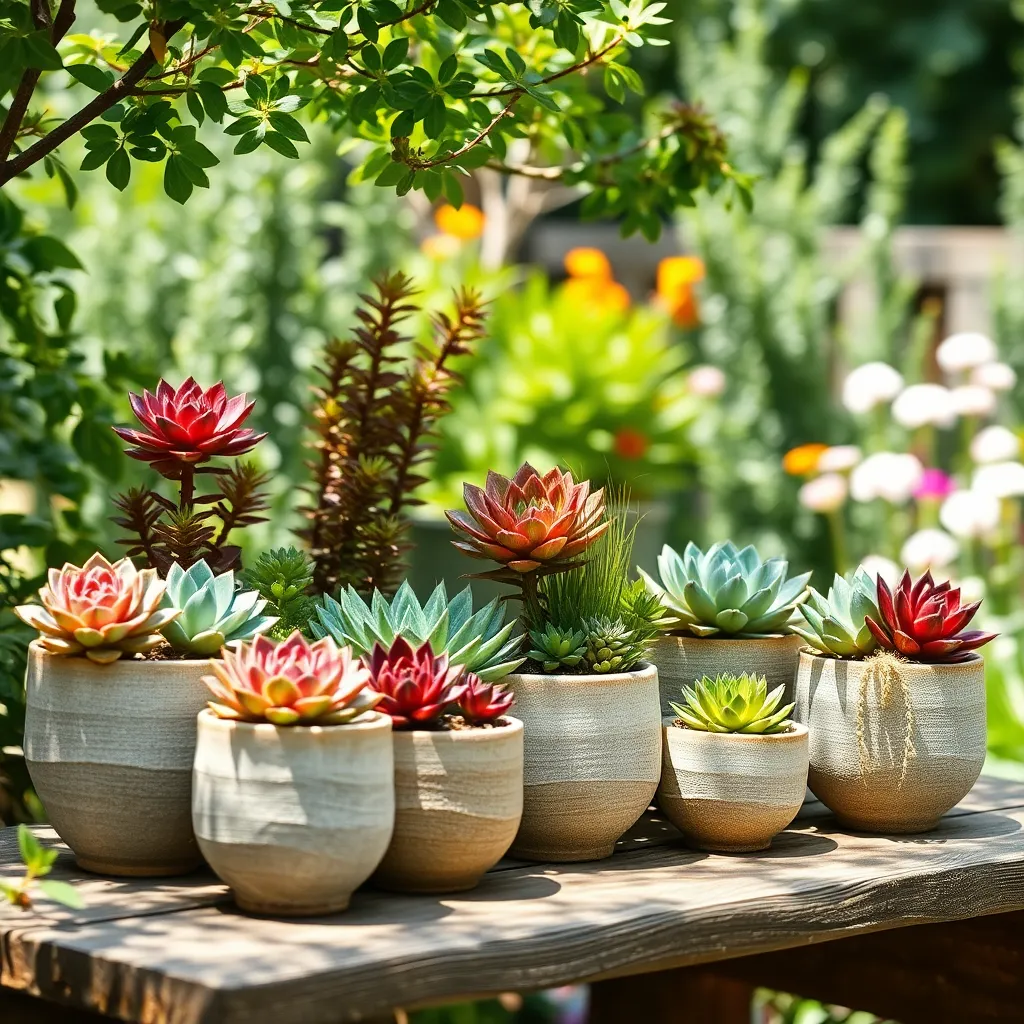
Choosing the right container size is crucial for the health of your succulents. A container that is too small can restrict root growth, while one that is too large may hold too much moisture and cause root rot.
It’s essential to match the container size to the succulent type and its growth rate. For smaller succulents like Echeveria or Haworthia, a pot that is 4 to 6 inches in diameter is generally sufficient.
For larger or faster-growing varieties like Aloe or Agave, consider using containers that are at least 8 to 10 inches wide. Ensure the pot has drainage holes to prevent water from accumulating at the bottom, which is critical for succulent health.
When selecting containers, consider the material as well. Terracotta pots are excellent for succulents because they allow moisture to evaporate quickly, reducing the risk of overwatering.
For more advanced gardeners, experimenting with container depth can also improve succulent growth. Deeper pots may benefit succulents with extensive root systems, providing them with more space to thrive.
Prepare Well-Draining Soil Mix

To create a well-draining soil mix for succulents, start with a base of regular potting soil. It’s crucial to enhance drainage by adding materials such as coarse sand, perlite, or pumice to this base.
Consider a mix ratio of approximately two parts potting soil to one part coarse sand and one part perlite. This combination ensures that water flows quickly through the soil, preventing the roots from sitting in moisture.
Advanced tip: Use crushed granite or small gravel as an additional amendment for even better drainage and aeration. These materials not only improve the soil structure but also mimic the natural environment of succulents.
When preparing your soil mix, avoid using peat moss as it retains too much moisture for succulents. Instead, opt for coconut coir, which provides better aeration and water retention balance.
- Test the drainage by watering the soil mix; it should drain within a few seconds.
- Adjust the mix by adding more sand or perlite if the soil retains water longer than desired.
Plant Succulents with Care
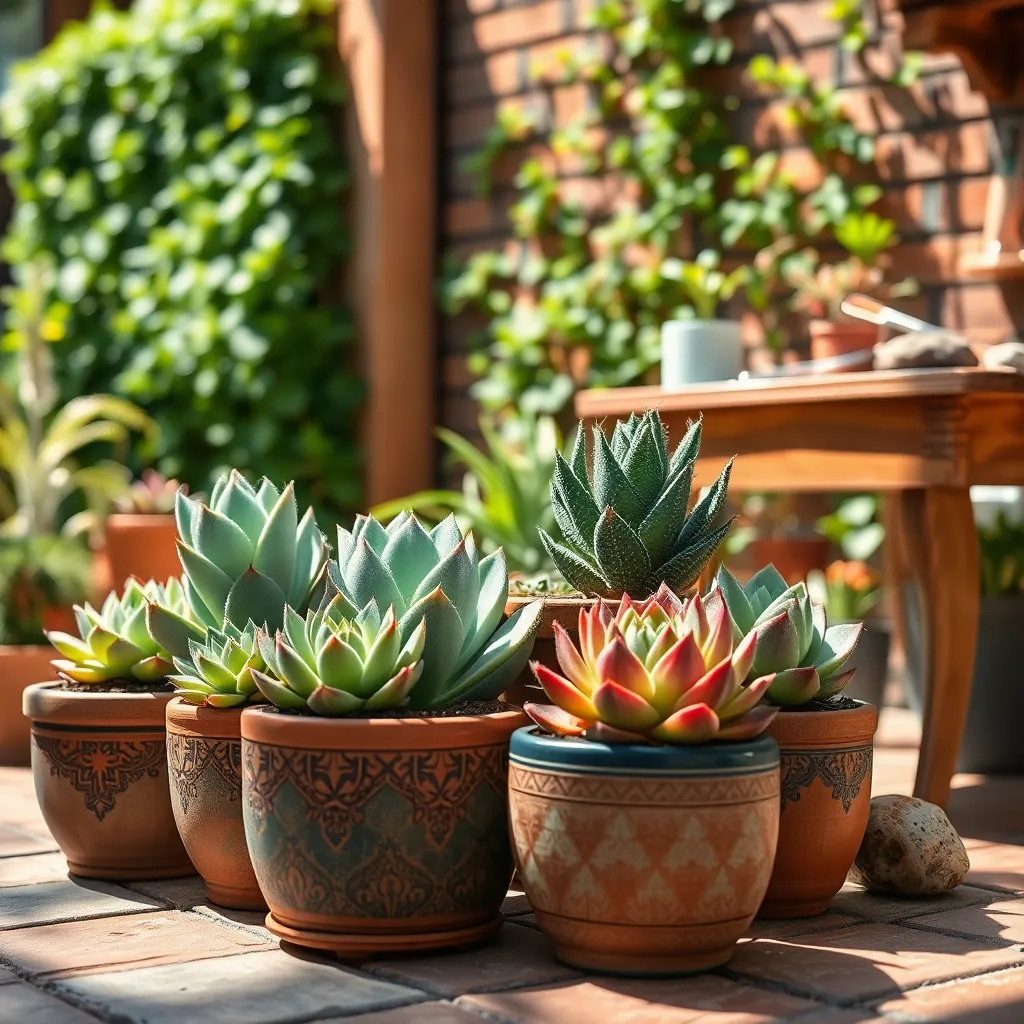
When planting succulents, ensure you choose a container with adequate drainage holes. This helps prevent water from accumulating at the bottom, which is crucial since succulents are prone to root rot.
Begin by filling your container with a prepared succulent soil mix, leaving some room at the top for planting. If you prefer a DIY approach, create your own mix using equal parts of potting soil, coarse sand, and perlite for optimal drainage.
Place the succulent in the container, gently spreading its roots over the surface of the soil. Make sure the base of the plant sits just below the rim of the pot to allow for proper air circulation.
After planting, add a layer of decorative pebbles or gravel around the base of the succulent. This not only enhances the aesthetic appeal but also helps retain moisture and keep the soil in place.
Once your succulent is potted, water it lightly, ensuring the soil is moist but not soggy. Allow the soil to dry out completely between watering sessions, usually every 1-2 weeks, depending on the climate and indoor conditions.
For those looking to enhance their succulent care, consider rotating the container periodically. This ensures even sunlight exposure, promoting balanced growth and preventing the plant from leaning toward the light source.
Water Sparingly and Monitor Growth
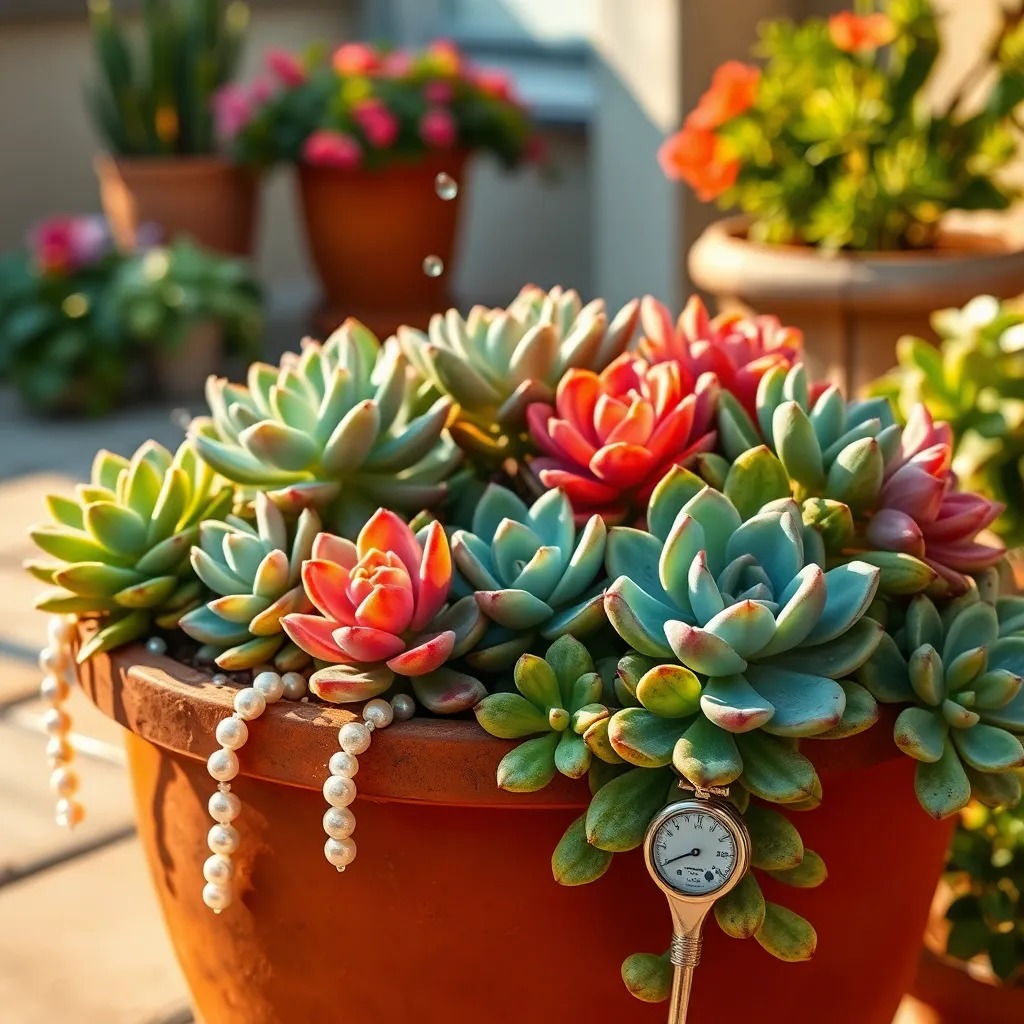
When it comes to watering succulents in containers, less is more—these plants thrive in dry conditions. Water your succulents only when the soil is completely dry, which might mean once every two to three weeks, depending on your climate and the season.
Use a container with good drainage to prevent water from pooling around the roots, which can lead to rot. A sandy, well-draining soil mix, such as one designed for cacti and succulents, is ideal for creating an environment that mimics their natural habitat.
Monitoring the growth of your succulents is crucial to ensuring they remain healthy over time. Observe the leaves and stems for signs of overwatering, such as mushy textures or black spots, which indicate it’s time to scale back on moisture.
For those looking to enhance their succulent care, consider rotating the containers every few weeks to provide even light exposure. This technique helps prevent the plants from leaning toward the light source and promotes uniform growth.
Regularly check for pests such as mealybugs and aphids, which can be more prevalent in container setups. A simple spray of diluted neem oil can help manage these pests effectively without harming your plants.
Conclusion: Growing Success with These Plants
In wrapping up our exploration of ‘How to Grow Succulents in Containers’, we’ve uncovered five key relationship concepts that mirror the nurturing of life and love. First, choosing the right container is akin to creating a supportive environment for growth. Second, understanding soil needs parallels the importance of a solid foundation. Third, proper watering habits remind us of the balance required to keep relationships thriving. Fourth, ensuring adequate sunlight highlights the necessity of positive energy and attention. Lastly, recognizing when to repot draws parallels to adapting and evolving together.
Now, take a moment to assess your own relationship “container”—is it supportive and nurturing? Consider what small change you can implement today, whether it’s a heartfelt conversation or a simple act of kindness, to enrich your partnership.
We invite you to bookmark this article for guidance as you cultivate your relationship garden. By saving these insights, you’re equipping yourself with tools for enduring love and growth.
Remember, just like succulents, relationships flourish with patience, care, and the right environment. As you apply these principles, envision a future where your relationship not only survives but thrives in abundance and harmony.

